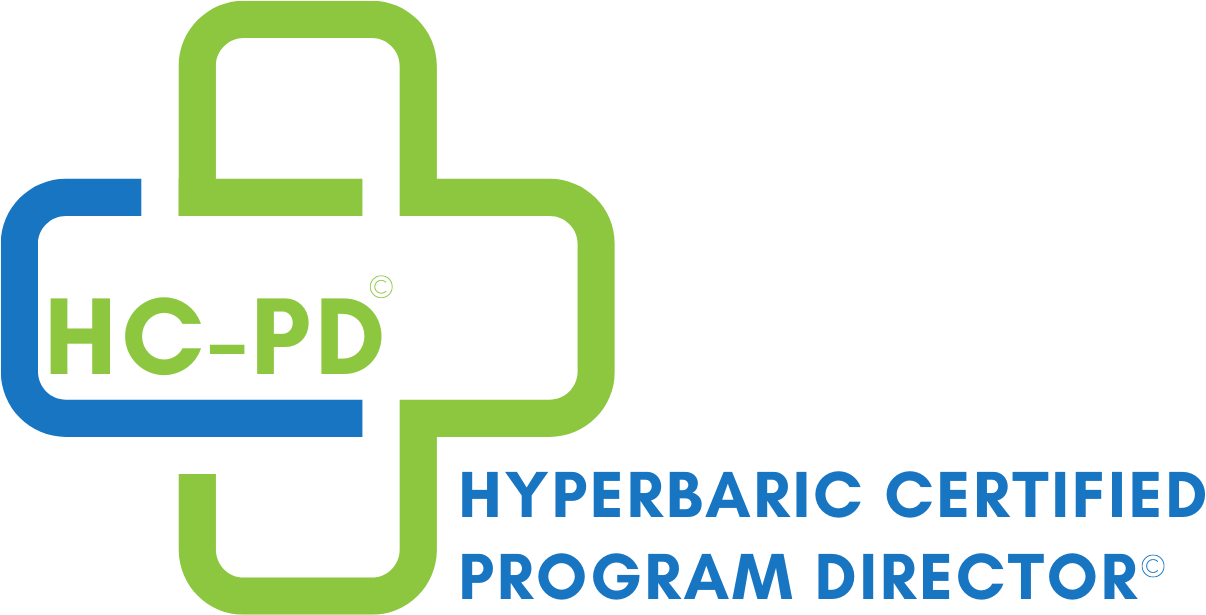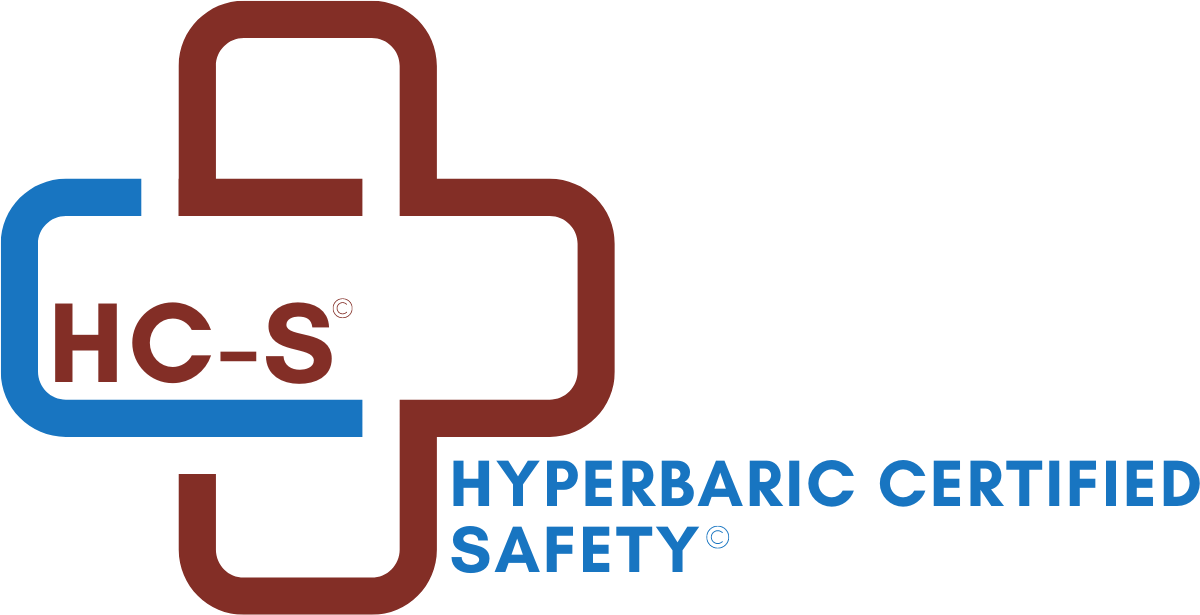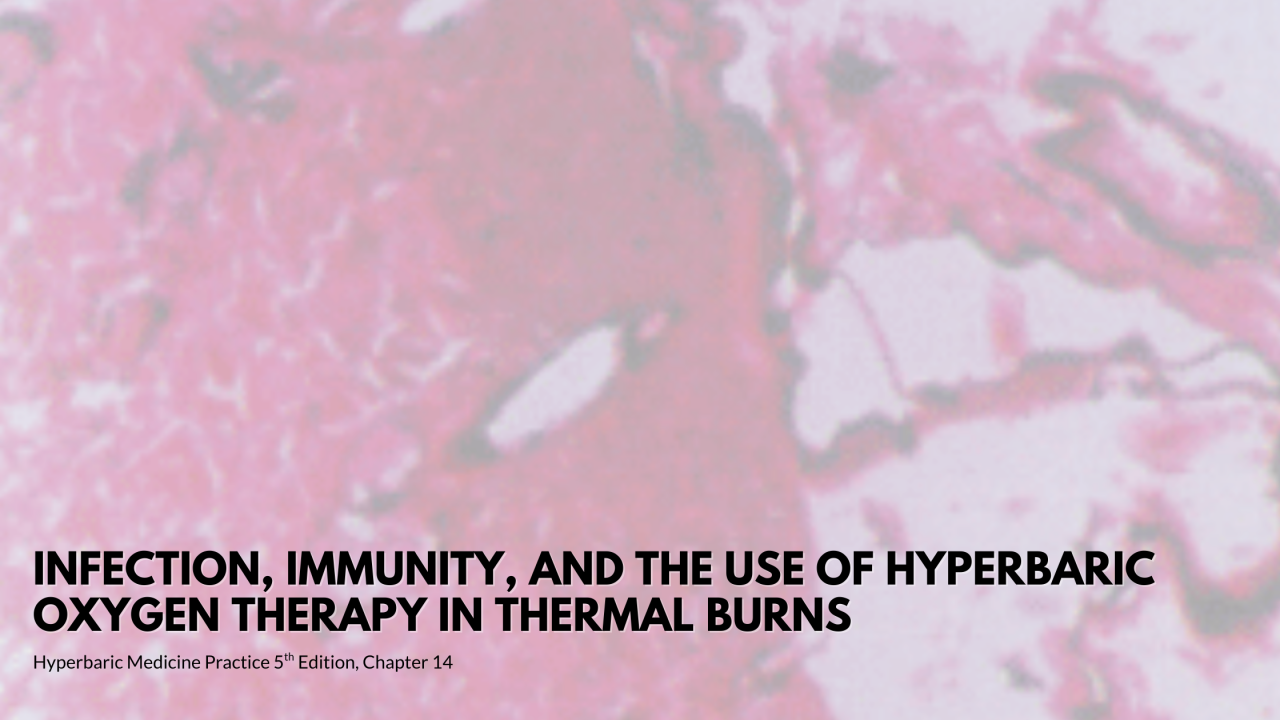Rx Pad
Infection, Immunity, and the use of Hyperbaric Oxygen Therapy in Thermal Burns
Infection, Immunity, and the use of Hyperbaric Oxygen Therapy in Thermal Burns
A significant and consistently positive body of evidence from animal and human studies of thermal injury supports the use of hyperbaric oxygen as a means of preventing dermal ischemia, reducing edema, modulating the zone of stasis, preventing partial- to full-thickness conversion, preserving cellular metabolism, dampening inflammation, preventing infection, and promoting healing. The overwhelming majority of clinical reports have shown reduced mortality, length of hospital stays, number of surgeries, and cost of care. Hyperbaric oxygen has been demonstrated to be safe in the hands of those thoroughly trained in rendering this therapy in the critical care setting and with appropriate monitoring precautions. Careful patient selection is mandatory.
Hyperbaric oxygen has been demonstrated to be safe in the hands of those thoroughly trained in rendering this therapy in the critical care setting and with appropriate monitoring precautions.
Infection
Infection remains the leading overall cause of death from burns. Susceptibility to infection is increased due to the loss of the integumentary barrier to bacterial invasion, the ideal substrate present in the burn wound, as well as the compromised or obstructed microvasculature, which prevents humoral and cellular elements from reaching the injured tissue. Additionally, the immune system is seriously affected, demonstrating decreased levels of immunoglobulins, perturbations of polymorphonuclear leukocyte (PMNL) function, including disorders of chemotaxis, phagocytosis, and diminished killing ability. These functions increase morbidity and mortality. Certain patients with specific polymorphisms in the tumor necrosis factor and bacterial recognition genes may have a higher incidence of sepsis than the burn injury alone would predict. More recently, fungal infections have become a therapeutic challenge.
Immunity and Infection
Tenenhaus and colleagues showed a reduction in mesenteric bacterial colonization (p<0.005) in an HBO2-treated-burned mouse model. Bacterial translocation is believed to be a major source of burn wound infection. In 2005, Magnotti et al. proposed an evolution from bacterial translocation to gut ischemia-reperfusion injury after burn injury as the pathogenesis of multiple organ dysfunction syndrome. Systemic inflammation, acute lung injury, and multiple organ failure after a major thermal injury are common causes of morbidity and mortality. In the normal host, the intestinal mucosa functions as a major local defense barrier, a component of multiple defense mechanisms that help prevent gut bacteria, as well as their products, from crossing the mucosal barrier.
After a major thermal injury, and in other clinical and experimental situations, this intestinal barrier function becomes overwhelmed or impaired, resulting in the movement of bacteria and/or endotoxin to the mesenteric lymph nodes and systemic tissues, defined as bacterial translocation. The importance of this intestinal barrier function becomes clear when considering that the distal small bowel and colon contain concentrations of anaerobesand to each of Gram-positive and Gram-negative aerobic and facultative microorganisms per gram of tissue, and enough endotoxin to kill the host thousands of times over. Loss of gut barrier function and a resultant gut inflammatory response leads to the production of proinflammatory factors. This can cause a septic state leading to distant organ failure. Splanchnic hypoperfusion leading to gut ischemia-reperfusion injury appears to be the dominant hemodynamic event, triggering the release of biologically active factors into the mesentericlymphatics.
The benefits of the early use of hyperbaric oxygen in burn victims may be partly mediated through amelioration of gut reperfusion injury. Total enteral nutrition, starting as early as possible after thermal injury, is recommended for burn patients. It results in decreased morbidity and mortality and supports intestinal structure and function. Studies of intestinal barrier function biology, pathophysiology and consequences of gut barrier failure demonstrate that the ischemic and/or stressed gut can become a proinflammatory organ. Gut-derived factors liberated after periods of splanch-nic hypoperfusion can lead to acute distant organ failure, cellular dysfunction, and activation of neutrophils and other proinflammatory cells.
Immunity and Infection
A major and continuing clinical problem is the innate inflammatory response induced by genetic factors such as those common in neutrophils and macrophages, which are massively increased while the T-cell adaptive responses are downregulated. Zhang and colleagues have shown that hyperbaric oxygen attenuates apoptosis and decreases inflammation in an ischemic wound model. The effect of hyperbaric oxygen on modulation of white cell adher-ence to endothelium has been described. Thom et al. studied the effect of hyperbaric oxygen and demonstrated that HBO2 additionally does not alter platelet function but inhibits beta 2 integrin adhesion to endothelium at pressures of 2.8 ATA or more. This would have a beneficial effect on the early stages of burn injury.
Publication Permission
This post is composed of excerpts from Chapter 14 of the UHMS, Hyperbaric Medicine Indications Manual,15th Edition with permission from the publisher. Get your copy of the textbook today and learn more at BestPub.com
Educational Resources:
Are you seeking continuing education in the area of Wound Care or Hyperbaric Medicine? Wound Care Education Partners offer courses in Introduction to Hyperbaric Medicine and Wound Care Certification Prep Course and Refresher Training Register for your course today.
When you subscribe to the blog, we will send you an e-mail when there are new updates on the site so you wouldn't miss them.



Comments